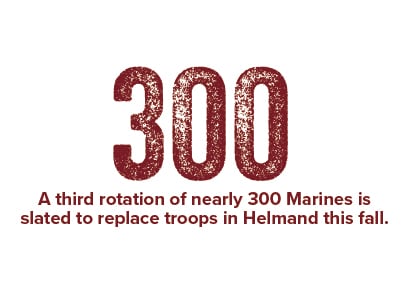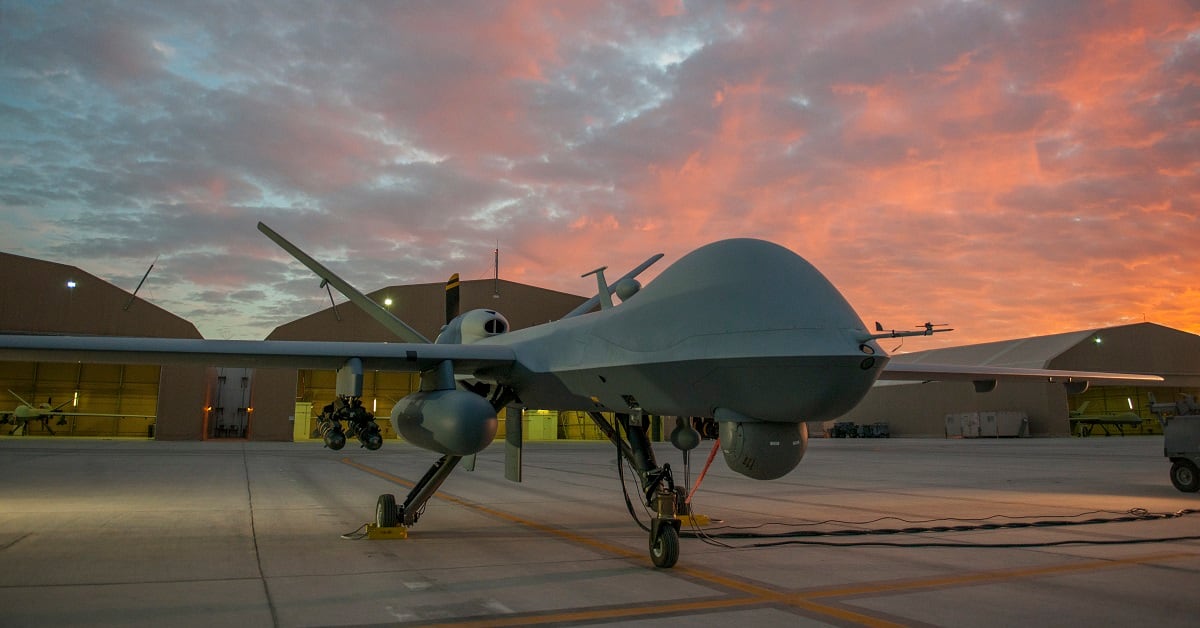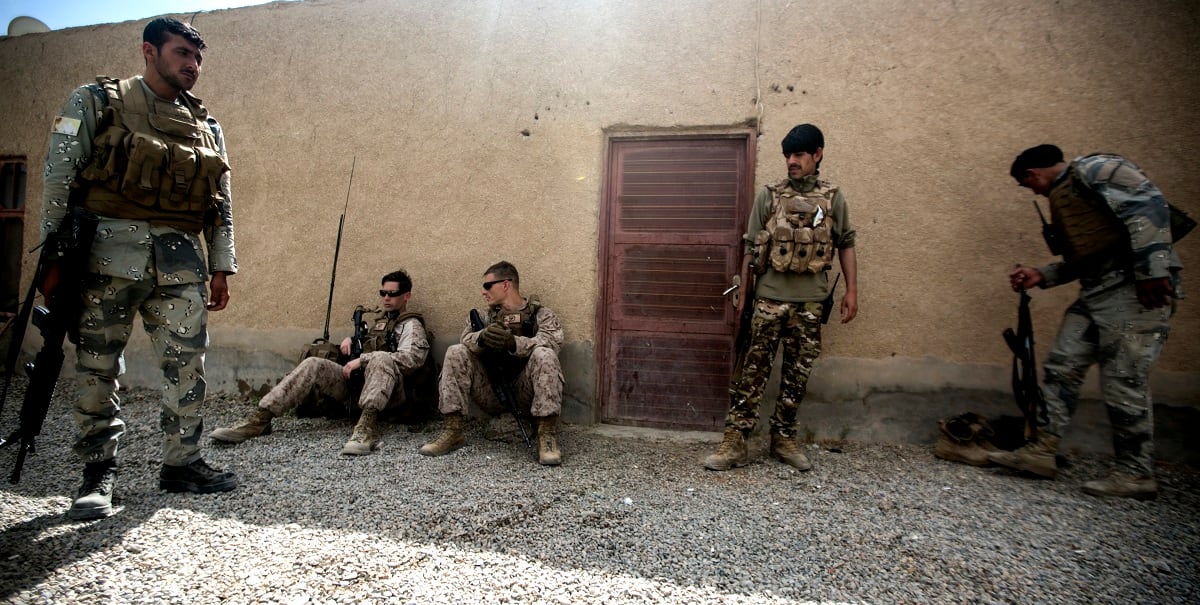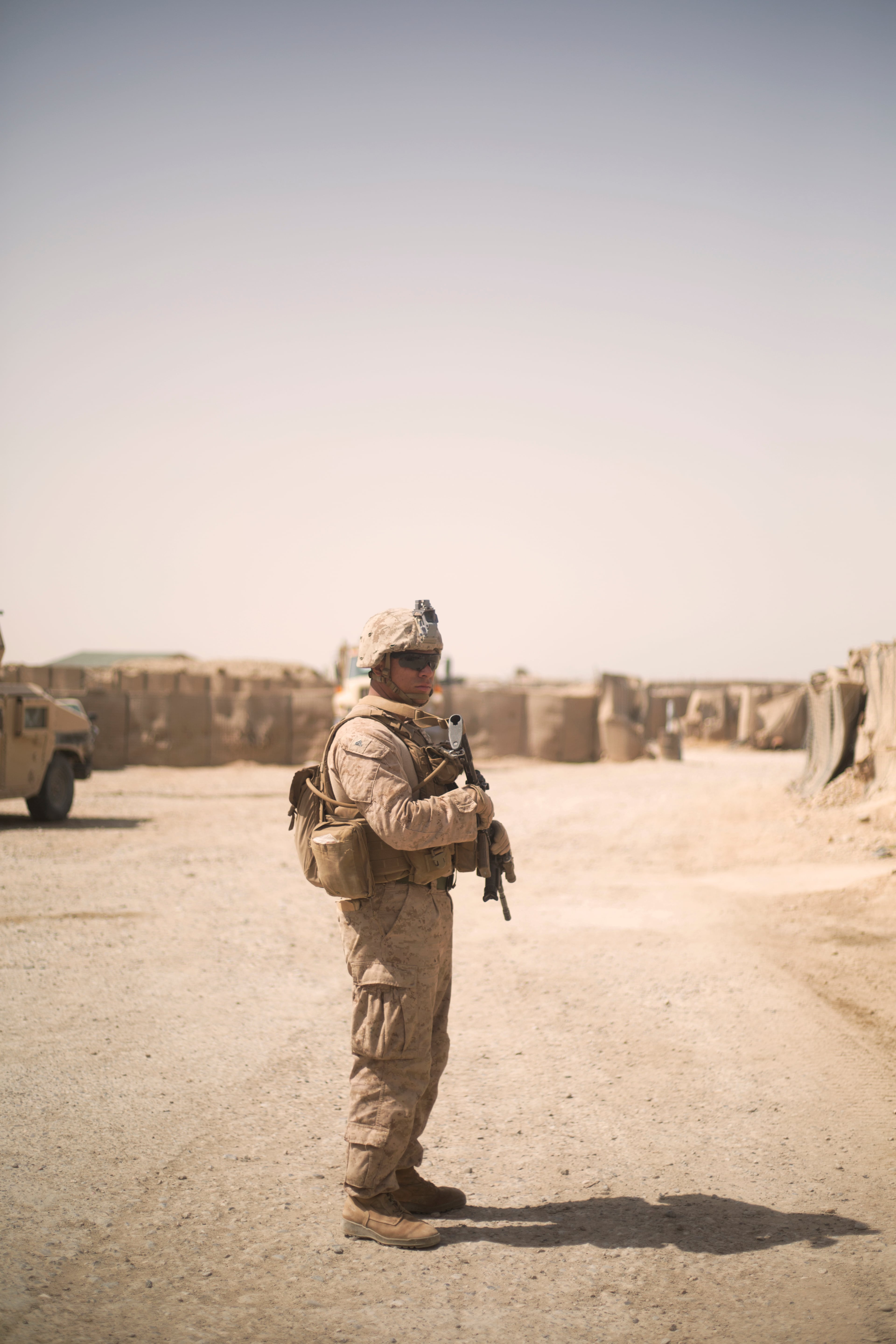The brief few days of peace between the Taliban and Afghan government was a watershed moment for the war-torn region, when thousands of Taliban fighters entered Afghanistan’s cities to join government officials in celebrating the annual Muslim holiday of Eid.
The three-day cease-fire boosted hopes of ending the nearly 17-year war, with the U.S. largely relegated to the sidelines of an Afghan-led push for peace.
But in the backdrop of peace talks, the Corps is continuing its mission to rebuild Afghan forces to eventually shoulder the entire burden of security in Afghanistan’s most violent province, Helmand Valley, where a third rotation of Marine advisers is slated to arrive this fall to replace the current task force of nearly 300 Marines.
“Our commitment to this mission is enduring,” Capt. Joshua Benson, a Marine spokesman, told Marine Corps Times.

A stream of photos on social media over Eid-al-Fitr, the Muslim holiday that marks the end of fasting and Ramadan, showed Taliban fighters praying alongside Afghan forces.
Nevertheless, U.S. and Afghan forces were still at war with a handful of other terrorist groups who are not under Taliban leadership, underscoring the complexity of the conflict in Afghanistan.
Prior to the start of the unilateral cease-fire announced by Afghan President Ashraf Ghani on June 7, U.S. Special Forces and Afghan troops launched a major offensive, dubbed Hamaz 3, against ISIS fighters in Nangarhar province.
Ghani’s cease-fire ultimately went into effect on the 27th day of Ramadan. The Taliban announced its own cease-fire on June 9, which kicked off on Eid, and lasted for three days.
The U.S. forces in the region agreed to abide by the cease-fire declarations with exception to “U.S. counterterrorism efforts against IS-K, al-Qaida, and other regional and international terrorist groups, or the inherent right of U.S. and international forces to defend themselves,” Lt. Col. Martin O’Donnell, a spokesman for the Resolute Support mission, told Marine Corps Times.
And not all was quiet on the Helmand front at the outset of Ghani’s cease-fire.
“U.S. aircraft have conducted non-lethal ‘shows of presence’ in both Ghazni and Helmand province since Afghanistan’s unilateral cease-fire began,” O’Donnell said.
RELATED

U.S. forces also conducted a strike in Helmand that targeted al-Qaida, he said.
An opium-rich province, Helmand has been a key battlefield in the Afghan conflict. Thousands of U.S. Marines have fought to secure the rural landscape from Taliban militants — and to deny the insurgents access to cash from the drug trade.
The Corps got out of Afghanistan for several years but returned to the volatile province in 2017 to rebuild a fledgling Afghan Army’s 215th Corps.
The Marines today have a new mission focused on training and advising Afghan forces and bolstering the security bubble around the beleaguered provincial capital of Lashkar Gah.
Today, about nine of the 14 districts in Helmand are under insurgent control or influence, according to latest figures from a government watchdog, the Special Inspector General for Afghan Reconstruction, or SIGAR.
“However, the Afghan forces continue to make progress in securing the key population centers in Central Helmand,” said Marine Capt Aaron Reep, Afghan National Army 215th Corps operations adviser.
“One of the primary goals of TFSW is to assist the Afghan forces in providing security for the highest percentage of the population possible.”
The bloody province is in a bit of a stalemate however. Territory seldom changes hands if but for brief moments. Even offensive operations by the Taliban have reaped few rewards except for increasing Afghan forces’ casualties and the plunder of weapons and equipment, according to SIGAR.

The Corps has attempted to alter the balance of power by aiding its partner forces with U.S. airpower, drones, surveillance, and the reintroduction of the High-Mobility Artillery Rocket System, or HIMARS.
Since HIMARS started supporting the Corps’ mission in Helmand in October 2017, the Marines have fired roughly 115 HIMARS precision rockets targeting Taliban leadership and narcotics operations, Marine Corps officials said.
Those operations, coupled with TFSW’s intelligence gathering capabilities, have had devastating effects destroying millions in Taliban financing operations and removing key leaders from the battlefield.
Over a ten-day period from May 17-26, U.S. strikes in Helmand killed more than 70 senior Taliban leaders, defense officials said.
The largest strike came from four HIMARS rockets that struck a Taliban command and control center and killed 50 including the “deputy shadow governor of Helmand, multiple Taliban district governors, intelligence commanders and key provincial-level leadership from Kandahar, Kunduz, Herat, Farah, Uruzgan and Helmand provinces,” according to an assessment from U.S. Forces-Afghanistan.
“We continue to see progress in the capabilities and professionalism of the Afghan National Army 215th Corps and 505th Zone Afghan National Police, especially in the use of organic Afghan aviation and indirect fire support,” Benson told Marine Corps Times.
“The Marine advisers at the Regional Military Training Center at Camp Shorabak continue to have significant impacts in developing the proficiency of Afghan infantry kandaks that rotate through the eight-week Operational Readiness Cycle training course.”
But peace in Afghanistan appears to be elusive, though not impossible, and Helmand is likely to serve as a major spoiler to any peace deal.
“Helmand is a particularly difficult problem because there the war is over control of the multibillion-dollar drug business, not just politics,” said Barnett Rubin, senior fellow and associate director of the Center on International Cooperation at New York University.
“I am afraid that the major drug traders will be key actors in any peace process, not just Taliban and government. We will have difficult choices because they will oppose peace if it means a crackdown on narcotics. Peace will require a gradual approach to counter-narcotics, not a zero-tolerance approach,” Rubin said.
Some analysts believe Taliban fighters are disillusioned with the never-ending fight and that may drive a wedge between forces fighting in the field and senior Taliban leadership.

But the Taliban’s cease-fire ended abruptly — while Ghani offered to extend the cease-fire, the Taliban ordered its fighters back to the battlefield and attacks resumed, suggesting the group to be more cohesive than originally believed.
“The cease-fire refuted the thesis that the Taliban are fractured or splintered. They behaved as a single disciplined organization obeying their leadership,” Rubin said.
Nevertheless, the ability to implement a cease-fire may bode well for potential peace prospects.
But what would peace look like in Afghanistan and what kind of concessions will the Afghan government make to the Taliban?
Analysts have argued whether the Afghan government would be willing to part with territory or potentially use Helmand as a bargaining chip.
“There is no possibility of a settlement in which Taliban are given control of some provinces. Both the government and the Taliban are opposed to dividing Afghanistan in that way. Taliban could participate in the power structure in the areas where they are influential,” Rubin said.
Shawn Snow is the senior reporter for Marine Corps Times and a Marine Corps veteran.





